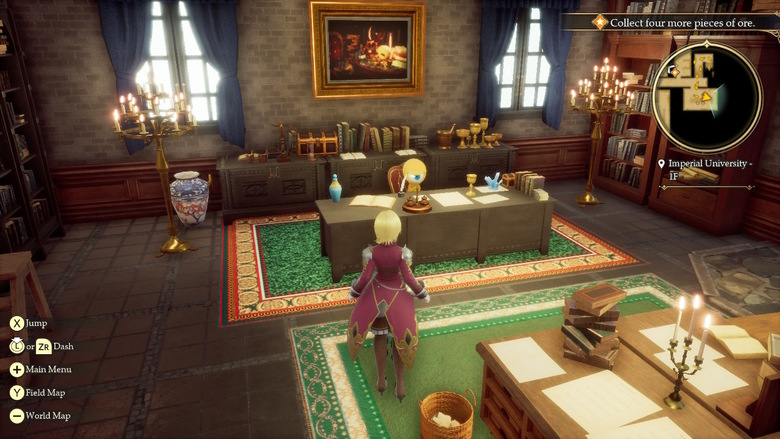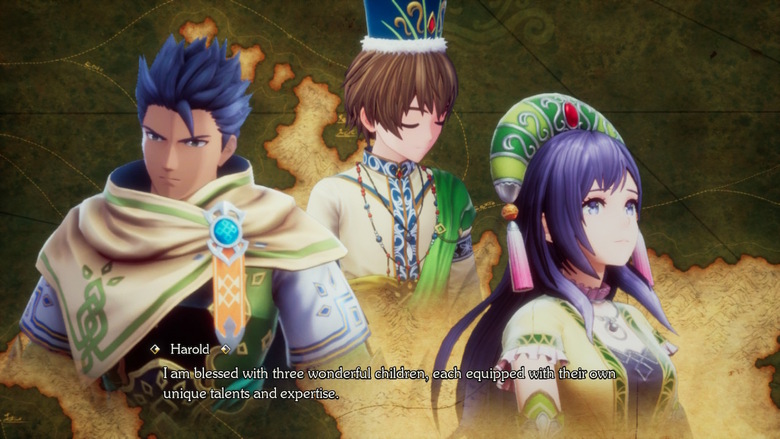REVIEW - Romancing SaGa 2: Revenge of the Seven is RPG Royalty
"You found Mr. S!"
Would you swear fealty to Avalon?
Playing Romancing SaGa 2: Revenge of the Seven for the past weeks has allowed me to experience an RPG that will remain in my collection of gaming greats, alongside giants like Xenoblade Chronicles and Final Fantasy IV. It’s a beautiful game with an ambitious story told over centuries, presented with the finest music, gorgeous locales and a truly engaging battle system. Simply put, Revenge of the Seven is pure RPG greatness.
In Romancing SaGa 2: Revenge of the Seven, the titular Seven Heroes have been praised as saviors of the land, and legend says that should tragedy arise, they will come back to defend the people. However, you, as the Emperor of Avalon, are faced with the biggest menace ever: those Seven Heroes have turned their backs on humanity and want revenge. You and your descendants will fight against the Seven over various centuries, all while improving your kingdom and discovering why the once-saviors have changed their ways.
The story is an epic one, reminding me of two other greats I’ve played: Dragon Quest VII and The Legend of Zelda: Tears of the Kingdom (or Breath of the Wild). You discover secret cutscenes that reveal what happened to the Seven Heroes in the past, just as you do in the recent Zelda games, but you also unearth various towns and peoples with their own stories, problems, and idiosyncrasies, much like in DQVII. This style of storytelling is very engaging, as little by little, you start making connections between the past and the present. Since the story spans several centuries, visiting a town hundreds of years later to see how your actions affected the nation is fascinating.
Unlike most games, Revenge of the Seven’s story is not focused on a main character, but on the Empire of Avalon and how its different Emperors/Empresses shape its story. Your decisions matter and you get so much freedom that no two players will have the same experience. However, unlike most open world games, there is actually a good amount of options, yet they never become overwhelming. Some decisions will lock you out of certain side-quests while opening others, which prevents a never-ending list of things to do from piling up. This also means the story is constantly in motion, with something new always waiting for you. Revenge of the Seven finds such a fine balance in its design that it feels grand without ever feeling pretentious.
You develop your kingdom, but you don’t have to build tens of different buildings; you forge weapons, but you don’t create dozen of arms that you won’t ever use; you get to explore gorgeous locales with secrets in every corner, but you never have empty space just for the sake of a huge, explorable world; you have many different classes to choose for your retinue, but they open up slowly, giving you time to experiment and find your favorites. The balance even extends to the battle system, which felt like another game I played recently: Octopath Traveler.
Every enemy has weaknesses and every character can equip two weapons and three types of magic. Hitting the weaknesses, instead of breaking the enemy like in Octopath, does something similar: it charges the Overdrive bar. Once Overdrive is full, you can perform a United Attack where every hit will cause double damage. Throughout the in-game years, you’ll be able to power up your Overdrive ability to perform more attacks for greater damage.
Once you win a battle, you get Battle Points (BP). These automatically go into improving whatever weapon or magic you used, so the more you use a type of attack, the stronger it becomes. You also get those BP applied to Health and Skill Points, plus equipping stronger weapons and armor will improve your stats as well. To learn more Techs, which are skills specific to a weapon, you have to use an attack that has a little lightbulb next to it. This relates to Techs being able to “Glimmer,” indicating that you can learn a new skill at that moment.
You will also improve your team during the course of your journey by finding a secret character in most locations: Mr. S. After finding him a set number of times, you start getting bonuses that improve your experience. However, outside of that aspect, just looking for Mr. S in every new area became my favorite activity, and seeing his cute and funny interactions with the environment was so much fun.
On a personal level, SaGa games have never clicked with me until Revenge of the Seven. Having worked through the adventure and found a whole new appreciation for the series, I strongly believe this entry could be the “Fire Emblem Awakening” moment for this franchise.
Turn-based RPGs are among my favorite types of games, and I have tried to play as many as I can throughout the years. Sadly, SaGa is one that, even after many tries, I was never able to connect with. Even games inspired by it, like The Alliance Alive, failed to fully engage me (I put over 30 hours in that game but couldn’t bring myself to finish it). I feel the main reasons for that disconnect were their extremely nonlinear design, confusing battle systems, and a disconnected plot.
Revenge of the Seven managed to offer so many fixes to those situations by allowing you to customize your game, so you could experience as much or a little guidance, and even an easier battle difficulty, should the game prove too challenging and you want to focus on story. To me, it felt like the breakthrough Fire Emblem Awakening was for that franchise, which brought it to the masses. I always play FE with permadeath, but it was great that people could finally turn off that option in Awakening. I truly hope that people that have been turned off by SaGa games in the past, like myself, can give Revenge of the Seven a chance, because this adventure is a piece of art that manages to feel both classic and modern.
As I was checking every corner in a town or entering homes to know more about the people, I had an epiphany: “this feels like going into every house in Pokémon or Breath or Fire, but now in 3D”. This is how you bring the classics to the masses! Beautiful graphics, fantastic voice acting, updated sensibilities that respect people’s time (like markers for side-quests that could be turned off if you want), an improved battle system, an awe-inspiring soundtrack, an epic storyline, and an indescribable feeling of being part of a monumental journey. There really is very little to fault with this game.
In terms of tech talk, after over fifty hours of my journey, the menu for completed quests took a couple of seconds to load, but it makes sense given how many I had solved by then. Some battles had a little bit of stuttering at the beginning or took a second or two to load after many hours, but it wasn’t anything that affected my enjoyment. Finally, sometimes it will take a second to fully load textures when entering a new area, but again, all of these minor faults took nothing from my satisfaction of playing this wonderful game.
Summary
No title could be more adequate for this game than Romancing SaGa: a story that takes hundreds of years, with epic moments, memorable characters and incredible locales. Revenge of the Seven must be experienced by every RPG fan, especially those that haven’t been able to connect with this series thus far. Play the demo and fall in love with its intricate, yet accessible battle system, its enchanting soundtrack, and a story unlike anything found in most RPGs. Prepare to engage in an extraordinary trek to see how the past and the present shape the impressive history of the Empire of Avalon.
About zjmaster

Christian’s a fan of long lists, Pokémon, SMT, Advance Wars, Xenoblade Chronicles, Splatoon, S/JRPGs, VNs...
When not solving mysteries in Ace Attorney or doing supports in Fire Emblem, he can be found doing math or learning languages.














Comments (0)